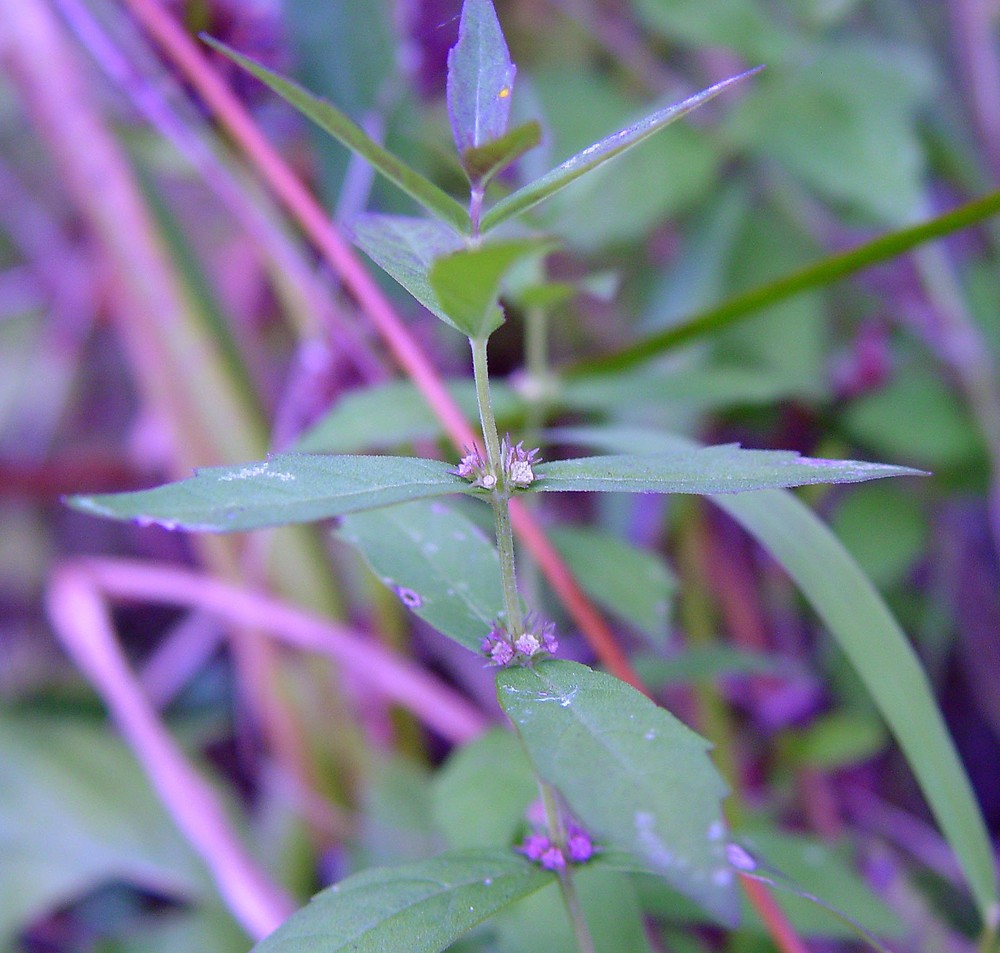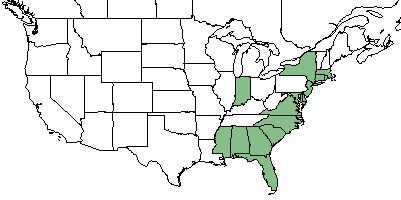Difference between revisions of "Lycopus amplectens"
(→Distribution) |
|||
| Line 31: | Line 31: | ||
==Ecology== | ==Ecology== | ||
===Habitat=== <!--Natural communities, human disturbed habitats, topography, hydrology, soils, light, fire regime requirements for removal of competition, etc.--> | ===Habitat=== <!--Natural communities, human disturbed habitats, topography, hydrology, soils, light, fire regime requirements for removal of competition, etc.--> | ||
| + | ''L. amplectens'' proliferates in clay-based Carolina bays and other moist habitats. <ref name= "Weakley 2015"> Weakley, A. S. (2015). Flora of the Southern and Mid-Atlantic States. Chapel Hill, NC, University of North Carolina Herbarium. </ref> | ||
<!--===Phenology===--> <!--Timing off flowering, fruiting, seed dispersal, and environmental triggers. Cite PanFlora website if appropriate: http://www.gilnelson.com/PanFlora/ --> | <!--===Phenology===--> <!--Timing off flowering, fruiting, seed dispersal, and environmental triggers. Cite PanFlora website if appropriate: http://www.gilnelson.com/PanFlora/ --> | ||
<!--===Seed dispersal===--> | <!--===Seed dispersal===--> | ||
Revision as of 14:30, 24 May 2018
| Lycopus amplectens | |
|---|---|

| |
| Photo by © Arthur Haines, New England Wild Flower Society | |
| Scientific classification | |
| Kingdom: | Plantae |
| Division: | Magnoliophyta - Flowering plants |
| Class: | Magnoliopsida - Dicots |
| Order: | Lamiales |
| Family: | Lamiaceae |
| Genus: | Lycopus |
| Species: | L. amplectens |
| Binomial name | |
| Lycopus amplectens Raf. | |

| |
| Natural range of Lycopus amplectens from USDA NRCS Plants Database. | |
Contents
Taxonomic Notes
Synonyms: L. amplectens var. pubens (Britton) Fernald; L. pubens Britton; L. sessilifolius A. Gray
Varieties: none
Description
L. amplectens is a perennial forb/herb of the Lamiaceae family native to North America. [1]
Distribution
L. amplectens is found along the southeastern coast of the United States from Mississippi to Massachusetts, as well as Indiana. [1]
Ecology
Habitat
L. amplectens proliferates in clay-based Carolina bays and other moist habitats. [2]
Conservation and Management
Cultivation and restoration
Photo Gallery
References and notes
- ↑ 1.0 1.1 USDA Plant Database https://plants.usda.gov/core/profile?symbol=LYAM2
- ↑ Weakley, A. S. (2015). Flora of the Southern and Mid-Atlantic States. Chapel Hill, NC, University of North Carolina Herbarium.